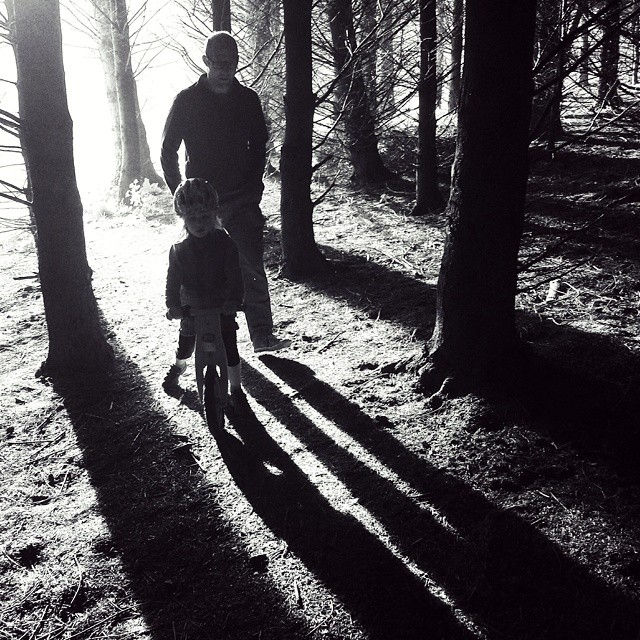Rock your phone photography
- Edith Leigh
- Aug 9, 2017
- 4 min read
Updated: Jan 17, 2020

I only had my phone in my pocket when I spotted this awesome shadow on the striking blue door. Action shots sometimes take a few tries when using your phone, but I love this shot.
There's a saying in photography that the best camera is the one you have with you and it's so true. If Time magazine's front cover can be shot on a smartphone, then you can absolutely take awesome pictures on your phone.
While a fancy-pants camera with interchangeable lenses does give you a lot more creative control, good photographs are still made in the basics. Here are some pointers to help you rock your smartphone photography so you can capture moments as they happen.
All of the pictures in this blog post were taken and edited on a smartphone by Dunedin photographer Edith Leigh.
Clean the lens
Let’s start at the very beginning. It might be a small piece of glass but that doesn't mean it doesn't get dirty. Your phone is often shoved in your pocket or hanging around in the bottom of your handbag where it collects dirt and grit.
Give the lens a wipe with clean, soft cotton – I usually use my t-shirt.
Hold the phone steady
When taking a picture or video lots of people hold the phone way out in front of them in one hand. Next time you see someone doing that it watch that phone closely and see how much it moves!
Much better to use two hands to keep it steady. Let it rest in one hand and wrap the fingers of both hands around the edges (just make sure you don’t cover the lens).
Then bend your arms and tuck your elbows in close to your sides for extra stability.
Use the focus button

Tap the screen to get the focus where you want it before you take the photograph. If you’re photographing people that’s usually the eye, so tap the focus on the face closest to the camera.
When you take the picture touch that button as softly as you can. If you jab at it you’re likely to shake the camera which will result in blurry photos.
Find the light

Good photography is all about the light which means if you find great light you can take a great picture whatever camera you are using.
Heading outdoors will always give you a better photo as there’s way more light bouncing around everywhere.
If it’s a sunny day it’s often best to take your pictures in the shade if you can.
If you’re stuck indoors get your subject as close to the window as you can. Put your back to the window and get your subject facing the window so they’re getting as much light on their face as possible.
Get close, then get closer. . . with your feet, not the zoom!

Have your subject fill the frame. You don’t want a tiny little subject in the centre of your picture. However, don’t zoom in with your lens as this can make the grain, blur and pixellation worse.
Zoom with your feet and walk closer to your subject.
Filling the frame is an instant way to give your pictures more impact.
Find a different view

Keep an eye out for reflections as you can make some fun pictures using them.
People tend to take their photos in the same way they use their phone - they hold it out vertically in front of them. Try holding your phone on its side. Horizontal photos look better if you're sharing them on social media such as Facebook.
With children and pets its often best to get the camera down to their level – so try sitting down or even lying on the ground.
Get creative and find a different perspective. Try standing on a chair and looking down from overhead. Try shooting through something such as flowers or branches to frame your subject. Look for reflections and have fun.
Turn on the grid lines

In this picture the main point of interest, the girl, is placed on one of the 'third' lines, with her face roughly at the intersection of two gridlines. Ideally, this photo would have been more balanced if the dog had also been placed on the top right intersection of the two grid lines.
Make use of the rule of thirds as a very quick and easy way to improve your photos.
Put your horizon line (and make sure it’s straight) on either the top or the bottom line. Put your main point of interest – which will often be the subjects face – on one of the points where the lines intersect.
Et voila! You are going to be surprised at how much this simple guideline will help improve your composition.
Play around with editing

A quick adjustment of brightness, lighting and contrast, and adding a touch of sharpening, can make a big difference to really make your picture pop a little.
If you still find yourself taking vertical pictures crop them to square before you share them on social media.
There are loads of photo editing apps so play around and have fun. Go to town at first, but remember less is often more effective! My favourite app for editing on Android is Snapseed.
Want to know how to look great in photos? Follow these top tips.
Having trouble finding the right family photographer for you? Here's ten questions you should ask before hiring a photographer.





Comments